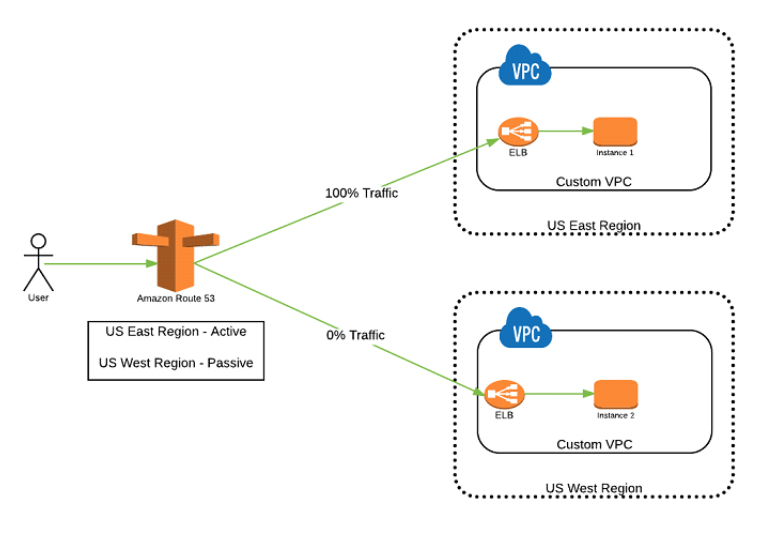On October 20, 2025, a significant outage occurred in Amazon Web Services, which had a global impact affecting thousands of platforms. The incident had its start at AWS’s East US-1 region in Virginia, where a malfunction in the Domain Name System (DNS) set off instability all over the place. The most used applications, websites, and systems of the enterprise immediately faced connectivity errors and failures in accessing.
AWS is a multinational cloud computing service, and it is one of the largest providers in the world. The digital operations of millions of businesses are hosted by AWS. The outage impacted the core services of the company, such as Elastic Compute Cloud (EC2) and Simple Storage Service (S3), and caused not only the inability of companies to serve customers but also the inability to process data.
The company was very prompt in its response by denying the incident at first, but soon after, it kept on confirming that the engineers were working on a resolution of the DNS problem. After a few hours, AWS came up with a statement that the fault had been “eliminated.” Yet, in certain places, it was prolonged before the service returned to normal.

Amazon Web Services outage disrupts global platforms after DNS failure.
Which Platforms Were Affected By AWS Server Issues?
The AWS outage in 2025 was a major event that affected a lot of people. A very brief blackout was experienced by Snapchat, Reddit, and Pinterest, which are social media platforms. Canva, a designer’s favourite tool, was also affected by the outage. Fortnite and League of Legends, two of the most popular games, had login issues, which caused major frustration to users on different continents.
Based in Australia, users of Canva complained about their projects not being saved or exported. Financial services and e-commerce sectors were also affected by the outage, so they had to deal with transaction delays and their apps going down. Government and education systems that relied on AWS for hosting power also experienced a decrease in service.
The Downdetector tracking service, which is a third-party, reported that during the first hour of the outage, more than 2,000 companies worldwide had already reported being affected. For a while, websites that were using AWS’s DNS service had “503 service unavailable” messages popping up.
Why Did The Amazon Web Services Downtime Happen?
AWS attributed the issue to a DNS resolution issue in its Virginia data centre. Internal load-balancing and monitoring systems, as well as global traffic routing, were already compromised, and thus, the massive user piles up in different places around the world were created.
AWS’s reliability has been a hallmark of the company, but this incident clearly demonstrated that the entire digital ecosystem is very fragile when the cloud provider is a single entity and is relied upon heavily. A very large number of businesses have the US-East-1 region as their primary location for hosting and data storage. In case of its failure, the entire system of dependencies scattered across the globe will also go down along with it.
Experts recommend that these events indicate the urgent need to consider redundancy and geographical diversification in the cloud service architecture. Giving an entire operation to one region or provider could mean the same output as a minor disruption, but the impact would be greater.

AWS blamed a DNS fault disrupting load balancing and global traffic routing.
How Did Businesses And Users Respond To The Outage?
The AWS server difficulties generated considerable discontentment among users. Complaints regarding unresponsive applications and services being slowed down were rampant on social media. The outage was a painful experience for content creators and online retailers as it directly translated to loss of revenue and hampered operations, respectively.
Canva and Snapchat are some of the large companies that went public with their service degradation messages and apologies to customers. Gamers were kept informed on the progress of their access restoration as the engineers worked behind the scenes to fix the problem.
For the less privileged, the interruption was a wake-up call. A majority of them realised the financial and reputational risks associated with total dependence on AWS infrastructure without backup systems. IT professionals stressed the need for hybrid-cloud or multi-cloud strategies to keep businesses running during such disasters.
What Did AWS Do To Resolve The Problem?
The AWS engineers were very prompt and isolated the problem at the DNS layer. They also redirected the traffic, and almost all primary services were back up by the late afternoon. On 20 October 2025, most systems were already stable by the evening.
AWS confirmed the incident in an official postmortem, saying that it had “discovered and alleviated the root cause” of the DNS issue regarding resolution. The company assured that they would conduct more technical reviews to further fortify their fault tolerance and also to enhance their automated monitoring.
The issue of dependency on the cloud was brought back to the forefront of the discussion, even though the services were restored. Technology experts commented that having one point of failure in a global infrastructure provider can easily affect millions of users in a matter of seconds.

AWS engineers swiftly fixed the DNS issue, restoring most services by evening.
What Lessons Can Be Learned From The AWS Outage 2025?
The Amazon Web Services outage highlighted the necessity of having proper cloud resilience and distributed infrastructure planning in place. The focus of businesses will now be on multi-region and multi-provider architectures, which not only give access but also ensure failover options are available.
The specialists advised businesses to:
- Employ several cloud providers for the distribution of the workload.
- Keep copies of data that is not on the cloud.
- Establish disaster-recovery plans that are proactive.
- Carry out continuous monitoring of third-party dependencies.
The outage period also emphasised, among other things, the importance of honesty and communication in dealing with crises. Those companies that were able to give timely updates were successful in maintaining the trust of their customers, despite the inconveniences caused by the disruption.
With the increasing reliance on the digital economy, such incidents will continue to test the modern cloud infrastructure’s limits. The AWS outage of 2025 might be a turning point for the businesses that are reconsidering their cloud dependence.
Also Read: Amazon’s $2.5 Billion Settlement Opens Refund Window for Prime Customers
FAQs
Q1: What was the reason for the Amazon Web Services downtime in 2025?
A: AWS mentioned a DNS resolution and load-balancing failure in its US-East-1 region in Virginia as the reason for the downtime.
Q2: Which services were affected due to the outage of AWS in 2025?
A: Global users experienced the impact on leading platforms like Canva, Snapchat, Reddit, Pinterest, and Fortnite.
Q3: How long was the AWS outage?
A: The core services got restored in a few hours, but complete stabilization of some systems took a bit longer.
Q4: What strategies should businesses adopt to avoid future AWS server issues?
A: Cloud-switching, cloud-computing, and having offline backup solutions are some of the ways companies can prepare for the worst.












